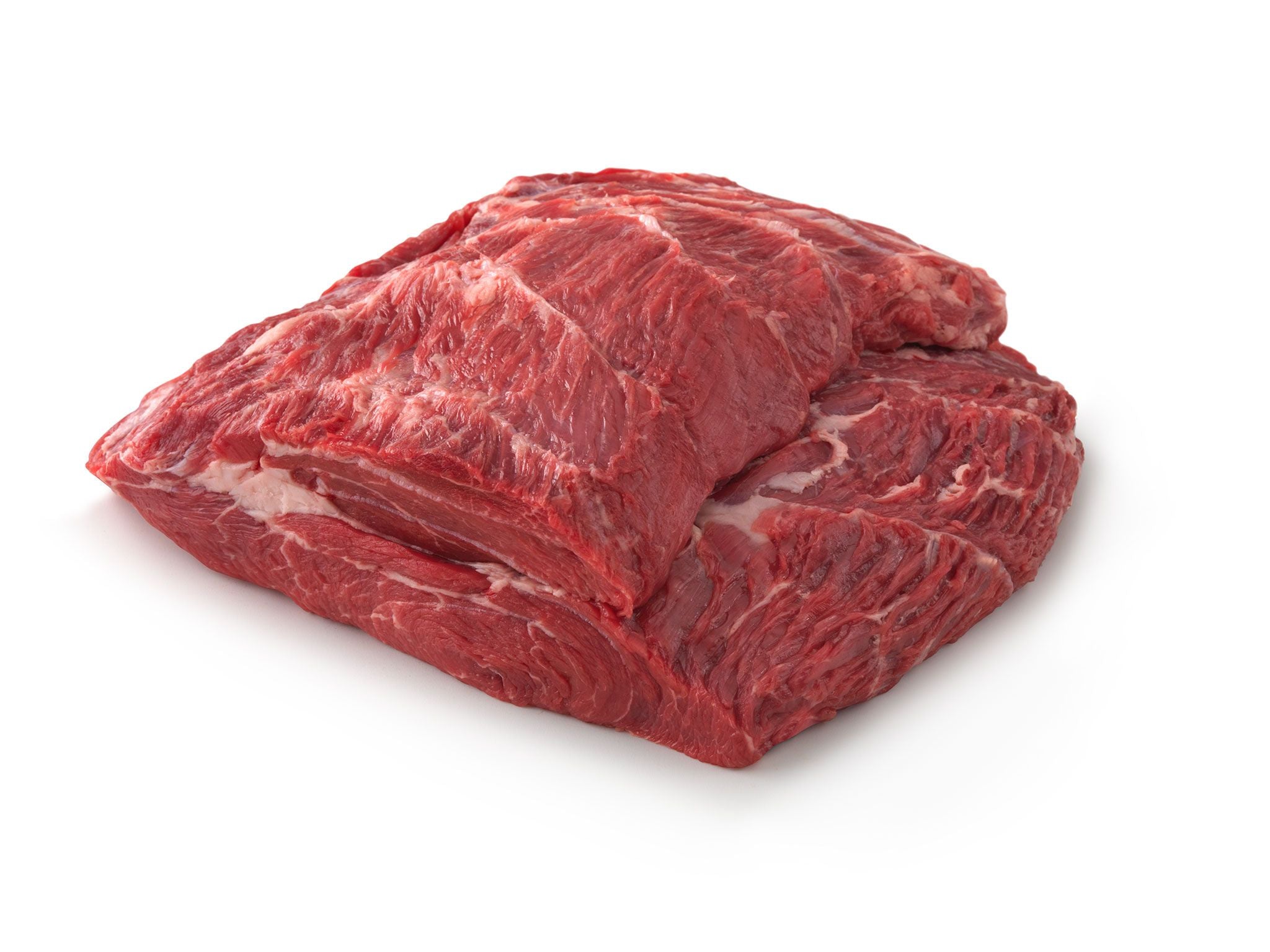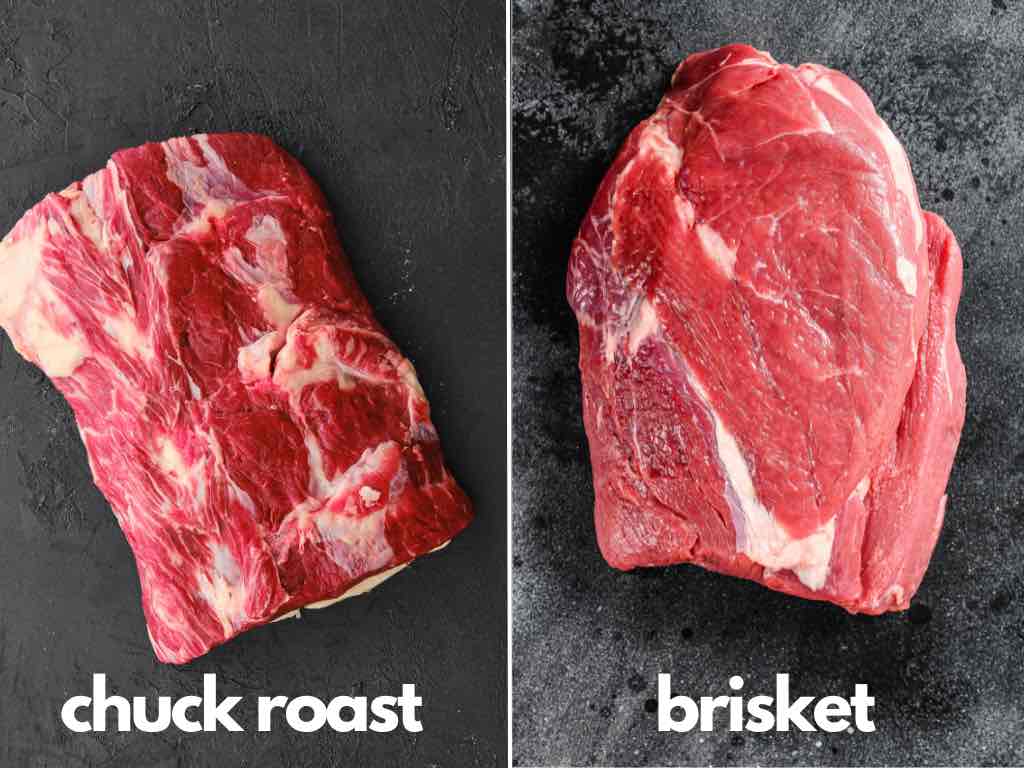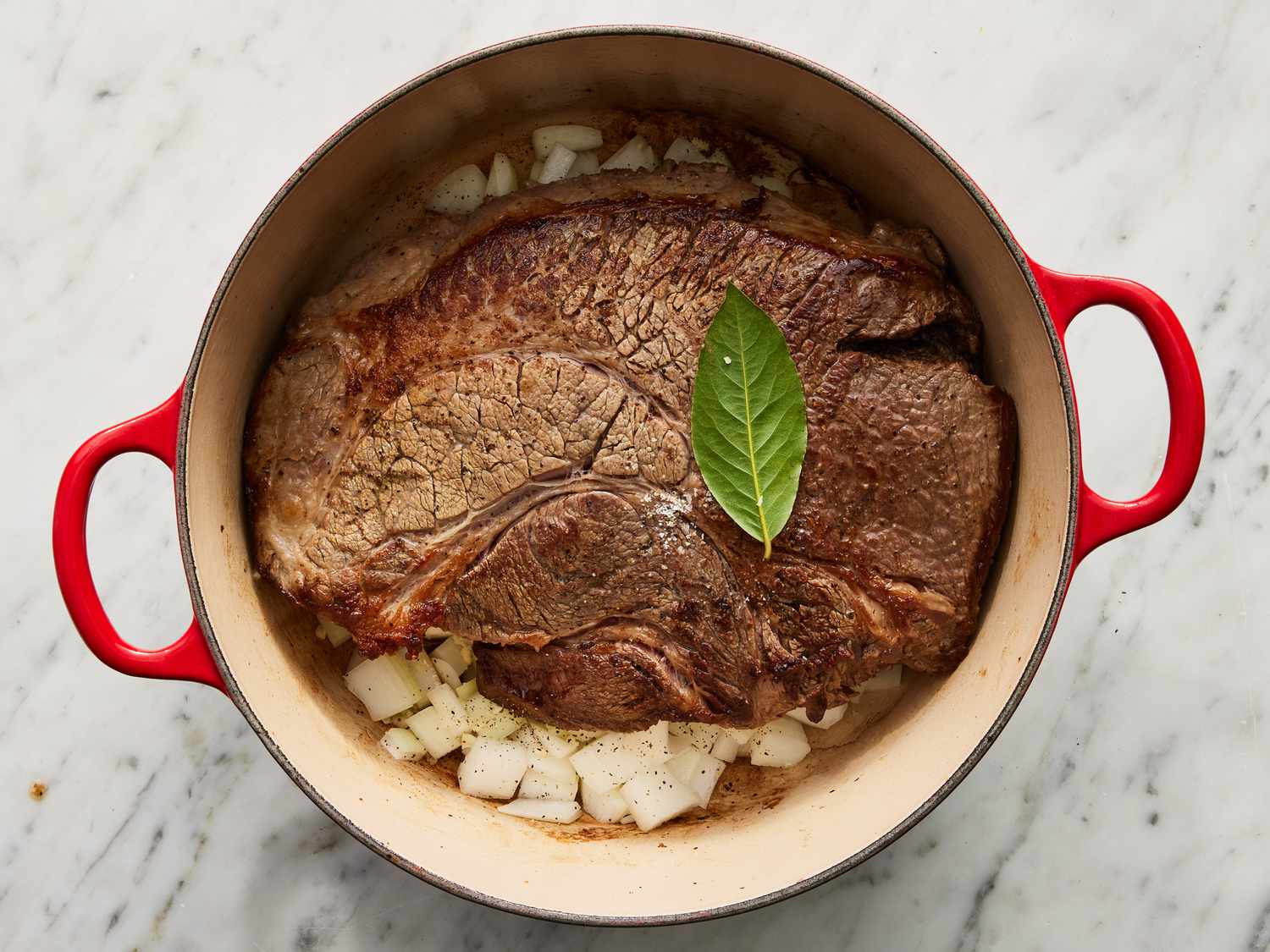
Introduction
Background Information On Shoulder Roast And Chuck Roast
Shoulder roast and chuck roast are two popular cuts of beef that are often used for roasting or braising. While they may seem similar at first, there are some key differences that can affect the taste and texture of the final dish.
Importance Of Choosing The Right Roast For Your Meal
Choosing the right roast for your meal is important because it can make a significant difference in the taste and texture of the finished dish. Whether you prefer a rich, flavorful roast or a tender, melt-in-your-mouth roast, understanding the differences between shoulder roast and chuck roast can help you make an informed decision and ensure that your meal turns out delicious.
One key difference between shoulder roast and chuck roast is the amount of marbling. Shoulder roast tends to have more marbling, which refers to the intramuscular fat that runs through the meat. This marbling gives the shoulder roast a richer flavor and can result in a juicier and more tender final dish. On the other hand, chuck roast has less marbling, which can make it leaner and slightly less flavorful, but it also tends to be more tender when cooked properly.
Another difference is the cooking time. Shoulder roast typically requires a longer cooking time compared to chuck roast. This is because the shoulder muscles are larger and contain more connective tissue. Slow cooking methods, such as braising or roasting at a low temperature, are often recommended for shoulder roast to help break down the connective tissues and make the meat tender. Chuck roast, on the other hand, can be cooked in less time due to its slightly higher tenderness.
In terms of flavor, both cuts offer excellent taste. However, the shoulder roast’s higher marbling content gives it a more intense flavor that some people prefer. If you enjoy a rich and flavorful roast, the shoulder roast may be the better choice for you. On the other hand, if tenderness and shorter cooking times are your priorities, chuck roast would be an excellent option.
In conclusion, when choosing between shoulder roast and chuck roast, consider your preferences for flavor, tenderness, and cooking time. Whether you go for the richer taste of the shoulder roast or the tenderness of the chuck roast, both cuts can result in a delicious and satisfying meal.
Shoulder Roast: Overview And Characteristics
Explanation Of What Shoulder Roast Is
Shoulder roast, also known as the “shoulder clod,” is a cut of beef that comes from the front shoulder area of the cow. It is a flavorful and versatile cut that is often used for roasting or braising. The shoulder roast is typically boneless and can weigh anywhere from 2 to 5 pounds.
Key Characteristics Of Shoulder Roast Cuts
- Rich flavor: One of the key characteristics of shoulder roast is its rich flavor. It has a higher amount of marbling, which refers to the intramuscular fat that runs through the meat. This marbling gives the shoulder roast a deep, intense flavor that many people enjoy.
- Juiciness: The marbling in the shoulder roast also contributes to its juiciness. The fat melts during cooking, keeping the meat moist and tender. This makes the shoulder roast a great choice for those who prefer a juicy and succulent roast.
- Longer cooking time: Due to the larger size and more connective tissues, shoulder roast typically requires a longer cooking time compared to other cuts. Slow cooking methods, such as braising or roasting at a low temperature, are often recommended to help break down the connective tissues and make the meat tender.
- Versatility: Shoulder roast can be used in various dishes, including pot roast, pulled pork, and shredded beef. Its rich flavor and tenderness make it a popular choice for slow-cooked meals.
- Budget-friendly: Shoulder roast is often more affordable compared to other cuts, making it a budget-friendly option for those looking to make delicious roasts without breaking the bank.
- Cooking method: The shoulder roast is best cooked using slow and moist heat methods, such as braising or roasting. This helps to tenderize the meat and bring out its rich flavor.
Overall, shoulder roast is a flavorful and versatile cut of beef that offers a rich taste and juiciness. Its longer cooking time may require some patience, but the end result is a delicious and satisfying roast.
Chuck Roast: Overview And Characteristics
Explanation Of What Chuck Roast Is
Chuck roast, also known as the “chuck roll,” is a cut of beef that comes from the shoulder area of the cow. It is a flavorful and tender cut that is often used for slow cooking methods. The chuck roast is typically bone-in or boneless and can weigh anywhere from 2 to 5 pounds.
Key Characteristics Of Chuck Roast Cuts
- Tender and juicy: One of the key characteristics of chuck roast is its tenderness. It contains a good amount of marbling, which helps to keep the meat moist and flavorful during cooking. This makes the chuck roast a great choice for dishes that require long cooking times.
- Rich flavor: Chuck roast has a rich and beefy flavor that many people enjoy. The marbling in the meat adds depth and richness to the taste, making it a popular choice for hearty dishes.
- Versatility: Like shoulder roast, chuck roast is also a versatile cut that can be used in various recipes. It is commonly used for pot roast, beef stew, and shredded beef. The tender and flavorful meat lends itself well to slow cooking methods.
- Cooking method: Chuck roast is best cooked using slow and moist heat methods, such as braising or slow roasting. This helps to break down the connective tissues and tenderize the meat, resulting in a melt-in-your-mouth texture.
- Budget-friendly: Similar to shoulder roast, chuck roast is often more affordable compared to other cuts of beef. It offers great value for money, especially when used in slow-cooked dishes that make the most out of its tenderness and flavor.
In conclusion, both shoulder roast and chuck roast have their own unique characteristics that make them suitable for different preferences and recipes. The shoulder roast offers a robust flavor and juiciness, while the chuck roast provides tenderness and rich marbling. Ultimately, the choice between the two cuts depends on personal preference and the desired outcome of the dish.

Choosing The Right Roast: Factors To Consider
Flavor And Tenderness Comparison Between Shoulder Roast And Chuck Roast
The shoulder roast, also known as the chuck roll, offers a robust beefy taste with a lean and juicy texture. It is a versatile cut that can be used in various recipes, providing a flavorful and tender eating experience. On the other hand, the chuck roast is known for its rich marbling, resulting in a melt-in-your-mouth texture. It has a deep beefy flavor that many people enjoy, making it a popular choice for hearty dishes.
Cooking Methods Suitable For Each Roast
Shoulder roast is best suited for slow and moist cooking methods such as braising. This allows the connective tissues to break down and results in a tender and juicy meat. The shoulder roast can be used in dishes like pot roast, beef stew, and shredded beef.
Chuck roast, on the other hand, is also ideal for slow cooking methods like braising or slow roasting. The rich marbling in the meat helps to keep it moist and tender during the cooking process. It is commonly used in pot roast and other dishes that benefit from the melt-in-your-mouth texture.
In conclusion, when choosing between shoulder roast and chuck roast, it ultimately depends on your preference and the recipe you are preparing. If you prefer a lean meat with a robust beefy taste, the shoulder roast is a solid choice. If you desire a richer texture with lots of marbling, the chuck roast will satisfy your taste buds. Both cuts have their own unique characteristics that make them suitable for different cooking methods and dishes.
Shoulder Roast: Pros And Cons
Advantages And Disadvantages Of Using Shoulder Roast In Your Recipes
- Advantages
- Flavourful: Shoulder roast offers a robust beefy taste that adds depth to your dishes.
- Lean and juicy: The meat from the shoulder roast has a good amount of fat marbling, ensuring a tender and juicy texture.
- Versatility: Shoulder roast can be used in various recipes, such as pot roast, beef stew, and shredded beef, providing a wide range of culinary options.
- Disadvantages
- Longer cooking time: Due to its relatively tougher nature, shoulder roast requires longer cooking times to break down the connective tissues and achieve maximum tenderness.
- Less marbling: Compared to other cuts, shoulder roast has less fat marbling, which can result in a leaner texture.
Tips For Maximizing The Flavor And Tenderness Of Shoulder Roast
- Marinating: Before cooking, marinate the shoulder roast to further enhance its flavor and tenderness. Consider using ingredients like Worcestershire sauce, garlic, and herbs.
- Slow cooking: Utilize slow cooking methods like braising to tenderize the meat and develop its full flavors. This allows the connective tissues to break down slowly, resulting in a melt-in-your-mouth texture.
- Resting: After cooking, let the shoulder roast rest for a few minutes before slicing. This allows the juices to redistribute throughout the meat, ensuring a moist and succulent result.
So, if you’re looking for a lean yet flavorful option that can withstand longer cooking times, the shoulder roast is an excellent choice. By following these tips, you can ensure a delicious and tender dish that will satisfy your taste buds.
Chuck Roast: Pros And Cons
Advantages And Disadvantages Of Using Chuck Roast In Your Recipes
- Advantages
- Rich flavor: Chuck roast is known for its intense beefy flavor, making it a great choice for those who prefer a robust taste.
- Moist and tender: The higher fat content in chuck roast helps keep the meat moist and tender, resulting in a melt-in-your-mouth texture.
- Marbling: Chuck roast has generous marbling, which adds flavor and juiciness to the final dish.
- Disadvantages
- Longer cooking time: Due to its tougher nature, chuck roast requires longer cooking times to fully break down the connective tissues and achieve optimal tenderness.
- Higher fat content: While the fat contributes to the richness and flavor of the meat, it may not be suitable for those looking for a leaner option.
Tips For Enhancing The Flavor And Texture Of Chuck Roast
- Seasoning rub: Apply a flavorful seasoning rub or marinade to the chuck roast prior to cooking. This will help to enhance the flavor profile of the meat.
- Slow cooking methods: Utilize techniques like braising or slow roasting to tenderize the meat. The slow cooking process will allow the connective tissues to break down gradually, resulting in a tender and succulent outcome.
- Resting time: After cooking, let the chuck roast rest for a few minutes before slicing. This resting period allows the juices to redistribute throughout the meat, ensuring a moist and flavorful result.
In summary, if you are in search of a cut of beef with a rich flavor profile and tender texture, chuck roast is an excellent choice. It offers a robust taste and plentiful marbling, making it suitable for various recipes. By following the tips mentioned above, you can elevate the flavor and tenderness of your chuck roast dishes.

Chuck Roast: Pros And Cons
Advantages And Disadvantages Of Using Chuck Roast In Recipes
- Advantages
- Rich flavor: Chuck roast is known for its intense beefy flavor, making it a great choice for those who prefer a robust taste.
- Moist and tender: The higher fat content in chuck roast helps keep the meat moist and tender, resulting in a melt-in-your-mouth texture.
- Marbling: Chuck roast has generous marbling, which adds flavor and juiciness to the final dish.
- Disadvantages
- Longer cooking time: Due to its tougher nature, chuck roast requires longer cooking times to fully break down the connective tissues and achieve optimal tenderness.
- Higher fat content: While the fat contributes to the richness and flavor of the meat, it may not be suitable for those looking for a leaner option.
Tips For Enhancing The Flavor And Texture Of Chuck Roast
- Seasoning rub: Apply a flavorful seasoning rub or marinade to the chuck roast prior to cooking. This will help to enhance the flavor profile of the meat.
- Slow cooking methods: Utilize techniques like braising or slow roasting to tenderize the meat. The slow cooking process will allow the connective tissues to break down gradually, resulting in a tender and succulent outcome.
- Resting time: After cooking, let the chuck roast rest for a few minutes before slicing. This resting period allows the juices to redistribute throughout the meat, ensuring a moist and flavorful result.
In summary, if you are in search of a cut of beef with a rich flavor profile and tender texture, chuck roast is an excellent choice. It offers a robust taste and plentiful marbling, making it suitable for various recipes. By following the tips mentioned above, you can elevate the flavor and tenderness of your chuck roast dishes.
Best Recipes For Shoulder Roast
Delicious And Popular Recipes Featuring Shoulder Roast
Cooking Techniques And Serving Suggestions
Best Recipes For Chuck Roast
Tasty And Crowd-pleasing Recipes Using Chuck Roast
When it comes to chuck roast, there are numerous delicious recipes that can make your taste buds sing. Here are some of the best recipes to try with this flavorful cut of beef:
- Classic Pot Roast: This timeless dish features chuck roast cooked low and slow with vegetables and aromatic herbs. The result is a tender and savory roast that is perfect for a comforting family dinner.
- Beef Stew: Chuck roast is ideal for hearty beef stew. The meat becomes tender and absorbs the rich flavors of the broth, vegetables, and seasonings. Serve it with crusty bread for a satisfying meal.
- BBQ Pulled Beef Sandwiches: Slow-cooked chuck roast can be transformed into mouthwatering pulled beef for sandwiches. Tossed in a tangy barbecue sauce, it’s a crowd-pleasing option for parties or casual gatherings.
- Beef Bourguignon: This classic French dish features chuck roast braised in red wine with onions, mushrooms, and herbs. The result is a luscious and flavorful stew that pairs perfectly with crusty bread or mashed potatoes.
Cooking Techniques And Serving Suggestions
To ensure the best results when cooking with chuck roast, consider the following cooking techniques and serving suggestions:
- Slow Cooking: The key to achieving tender chuck roast is slow cooking. Whether you opt for braising, roasting, or using a slow cooker, give the meat ample time to break down the connective tissues and develop its rich flavors.
- Seasoning: Enhance the flavor of your chuck roast by using a flavorful seasoning rub or marinade. Experiment with different herbs, spices, and marinades to find the combination that suits your taste preferences.
- Resting: After cooking, allow the chuck roast to rest for a few minutes before serving. This step allows the juices to redistribute, resulting in a more flavorful and juicy final product.
- Pairings: Chuck roast pairs well with a variety of side dishes. Consider serving it with mashed potatoes, roasted vegetables, steamed greens, or even creamy polenta to complement its rich and savory flavors.
In conclusion, chuck roast is a versatile cut of beef that can be transformed into flavorful and satisfying dishes. Whether you opt for classic pot roast or get adventurous with international cuisines, the options are endless. Embrace slow cooking methods, experiment with seasonings, and enjoy the tender and succulent results that chuck roast has to offer.
Conclusion
Summary Of The Differences Between Shoulder Roast And Chuck Roast
In summary, shoulder roast and chuck roast have different characteristics that can affect your choice when cooking. Here is a recap of the key differences:
- Shoulder roast typically contains less fat than chuck roast, making it a good option for those who prefer a leaner cut of meat.
- Chuck roast, on the other hand, has a higher fat content, which contributes to a richer flavor but requires longer cooking times to achieve tenderness.
- Shoulder roast has decent marbling, but it may not be as consistent as chuck roast in terms of texture.
- Both cuts are excellent sources of protein and provide essential vitamins and minerals.
Tips For Making An Informed Decision When Choosing The Right Roast For Your Meal
When choosing between shoulder roast and chuck roast, here are some tips to help you make an informed decision:
- Consider your flavor preference: If you enjoy a richer taste and don’t mind longer cooking times, the chuck roast might be the perfect choice. If you prefer a balance between flavor and leanness, the shoulder roast is a good option.
- Think about cooking time: If tenderness and a shorter cooking time are your priorities, the chuck roast is an excellent choice. However, if you have the time for a slow-cooked and juicier roast, the shoulder roast can deliver on that front.
- Experiment with different recipes and cooking methods: Both cuts can be used in a variety of delicious dishes. Try classic pot roast, beef stew, BBQ pulled beef sandwiches, or beef Bourguignon to explore the possibilities.
- Consider the marbling and texture: If consistent marbling and texture are important to you, the chuck roast may be a better choice. However, if you don’t mind variations and enjoy the challenge of cooking different cuts, the shoulder roast can provide a unique experience.
By considering these factors, you can choose the roast that best fits your preferences and create a delicious and satisfying meal. Happy cooking!
FAQ about Shoulder Roast vs Chuck Roast: Choosing the Right Roast for Your Meal
Q: What is the difference between a shoulder roast and a chuck roast?
A: The main difference between a shoulder roast and a chuck roast lies in the location of the cut on the animal. The shoulder roast is taken from the upper portion of the front leg, while the chuck roast is cut from the shoulder area closer to the neck.
Q: Are there any variations in taste and texture between the two cuts?
A: Yes, there are slight variations in taste and texture. The shoulder roast is typically more tender and juicy, with a bit more fat marbling throughout the meat, which gives it a richer flavor. Conversely, the chuck roast tends to be slightly tougher with a slightly stronger beefy flavor.
Q: Which cut is better for slow cooking?
A: Both shoulder roast and chuck roast are excellent choices for slow cooking. However, the shoulder roast tends to be more forgiving and tenderizes beautifully when cooked low and slow, making it a popular choice for recipes like pot roast or pulled pork.
Q: Can I use either cut for braising?
A: Absolutely! Both the shoulder roast and chuck roast work wonderfully for braising. Their marbling and connective tissue break down during the slow cooking process, resulting in succulent and flavorful meat. They are often used interchangeably in recipes like beef stew or braised beef.
Q: Does one cut require more preparation than the other?
A: Generally, the shoulder roast may require a bit more preparation before cooking. It usually benefits from marinating or applying a dry rub to enhance the flavors and tenderize the meat. On the other hand, the chuck roast can be directly seasoned and cooked without much fuss.
Q: Are there any price differences between shoulder roast and chuck roast?
A: In terms of pricing, chuck roast is typically more affordable compared to shoulder roast. This is mainly because the latter is considered a higher-quality cut due to its tenderness and excellent flavor.
Q: Can I substitute one for the other in a recipe?
A: While you can substitute one for the other in most recipes, it’s important to consider the differences in taste and tenderness. If tenderness and juiciness are your priorities, opting for the shoulder roast is recommended. On the other hand, if you prefer a slightly stronger beef flavor, the chuck roast may be a better choice.
Q: Any tips on how to cook each cut to perfection?
A: For both cuts, slow cooking methods like braising or roasting at a low temperature are ideal. For shoulder roast, marinating or dry rubbing beforehand can enhance its flavor. For chuck roast, searing it before slow cooking can help develop a tasty crust. Additionally, allowing the meat to rest before slicing will ensure tenderness.
When deciding between a shoulder roast and a chuck roast, considering factors such as tenderness, flavor, and pricing will help you choose the perfect cut for your meal. Enjoy experimenting with these delicious cuts of beef and savor the flavors they bring to your table!

Keep up with weekly specials through Facebook under “The Grill at Great Bridge.”